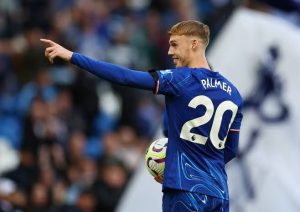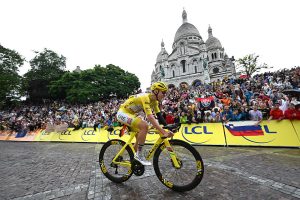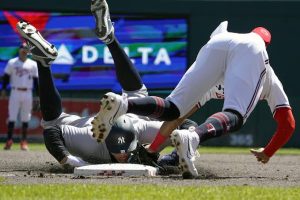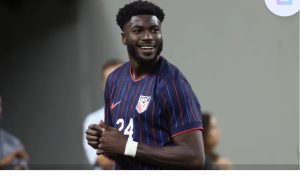
The Yankees Found an Unexpected Spark in the Middle of an Infield Crisis
The 2025 New York Yankees have endured their fair share of challenges, but perhaps none more disruptive than the infield crisis that struck in the early weeks of the season. With multiple starters sidelined due to injury and inconsistencies plaguing the expected contributors, the Bronx Bombers seemed vulnerable in an area traditionally defined by reliability and star power. However, out of that chaos emerged an unlikely hero—an unexpected spark who helped stabilize the team, ignite the offense, and inject much-needed energy into the clubhouse.
The Yankees entered the 2025 season with high expectations. With superstars like Aaron Judge, Juan Soto, and Gerrit Cole anchoring the roster, the focus was on chasing a 28th World Series title. The infield, bolstered by familiar names such as Anthony Rizzo, Gleyber Torres, DJ LeMahieu, and Anthony Volpe, looked solid on paper. Yet, baseball rarely follows the script.
In late April, injuries started piling up. Rizzo, the veteran first baseman, went down with a recurring back issue that has plagued him intermittently for the past few seasons. LeMahieu, the versatile infielder who has been a stabilizing force, suffered a fractured toe after fouling a ball off his foot. Gleyber Torres struggled with both health and performance, and his offensive numbers dropped to career lows. Even the promising Anthony Volpe, despite his stellar defense at shortstop, endured a slump at the plate that added pressure to the rest of the infield.
Suddenly, the Yankees were scrambling. Bench players were thrust into starting roles, and minor league call-ups became everyday names in the lineup. But amidst the uncertainty, one player stepped forward in a way no one could have predicted.
Enter Caleb Durbin.
A relatively unheralded utility infielder who began the season in Triple-A Scranton/Wilkes-Barre, Durbin wasn’t even on the 40-man roster to start the year. Acquired in a minor trade a couple of seasons ago, Durbin had quietly impressed coaches with his work ethic, versatility, and steady approach at the plate. Still, few expected him to be more than organizational depth. That perception changed quickly.
When called up in late April, Durbin wasted no time making his presence felt. In his first week, he batted .348 with two doubles, four walks, and a stolen base, playing both second and third base with smooth, fundamentally sound defense. While his tools may not dazzle on paper, his impact was undeniable. He brought a spark of hustle, intelligence, and confidence that had been missing from the Yankees’ infield.
Durbin’s arrival didn’t just fill a hole; it lit a fire.
The Yankees, who had dropped six of their previous ten games at the time of Durbin’s call-up, began to show signs of life. His presence at the bottom of the lineup extended rallies and flipped the order back to the top. He executed bunts, took extra bases, and played a clean infield—earning praise from manager Aaron Boone, who described him as “a ballplayer’s ballplayer.”
In an era dominated by launch angles and exit velocity, Durbin’s game stood out because of its simplicity. He doesn’t hit 450-foot home runs, but he puts the bat on the ball, runs the bases well, and makes the routine plays. That may not land him on highlight reels, but it’s exactly what the Yankees needed in a time of chaos.
Beyond the stats, his presence seemed to galvanize the rest of the clubhouse. Aaron Judge, known for his leadership, made a point to highlight Durbin’s contributions in postgame interviews. “He’s come in and just done his job. No flash, no ego, just baseball. That kind of play lifts everybody,” Judge said.
Durbin’s story is emblematic of a larger truth in baseball: sometimes the most valuable players are the ones who weren’t supposed to be stars. Injuries and slumps can derail a season, but they also create opportunities. And when a player like Durbin seizes that opportunity, it can shift the energy of an entire team.
His influence was felt not just in the infield but across the organization. His call-up opened the door for strategic flexibility. Boone could now give Volpe and Torres more selective rest days, confident that Durbin would maintain the team’s defensive integrity. It also allowed LeMahieu to take his time recovering instead of rushing back too soon—a decision that could pay dividends later in the season.
As the calendar turned to May, the Yankees’ infield began to stabilize. Volpe started hitting again. Torres showed flashes of his old self. LeMahieu resumed light baseball activities, aiming for a mid-May return. But the biggest development was that Durbin had earned his spot—not just as a fill-in, but as a valuable piece of the puzzle moving forward.
Of course, the Yankees still have bigger goals. Winning the AL East, returning to October, and making a deep playoff run remain the focus. But seasons are built on moments like these—when a little-known player rises to the occasion and keeps the team afloat. In the grind of a 162-game season, it’s often the unlikely contributors who make the biggest difference.
For now, Durbin continues to show up each day, take quality at-bats, and play clean defense. Whether he remains a starter or shifts into a utility role when the infield returns to full strength, he’s carved out a place on this team—and earned the respect of teammates, coaches, and fans alike.
The Yankees’ infield crisis could have spelled disaster. Instead, it revealed depth, resilience, and the emergence of a new fan favorite. Caleb Durbin might not have been the spark the Yankees expected, but he’s exactly what they needed.







